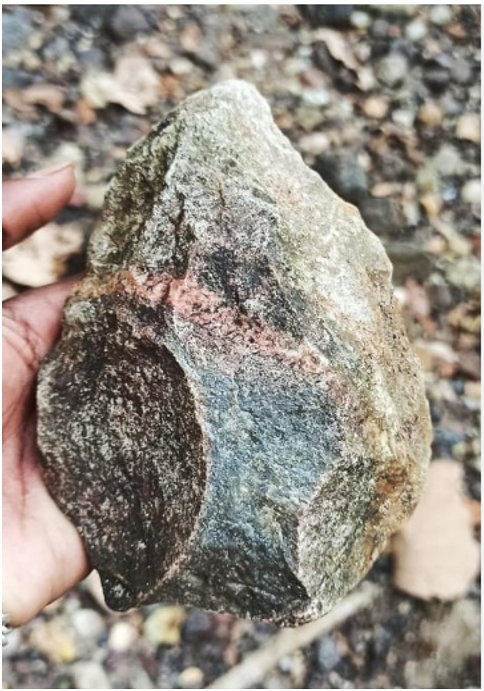Current Context
The recent floods in the Mulugu district of Telangana has led to a fresh discovery of paleolithic quartzite tools.
About
- The tools or hand axes were found in the sand bed of a stream that dried up after the flood.
- Large parts of Mulugu, Jayashankar Bhupalpally districts in the north-eastern parts of Telangana were flooded in July, 2023 leading to large-scale destruction.
- The hand axes were found in the stream between Gurrevula and Bhupatipuram villages in Mulugu district.

Tools or hand Axes found
- The stone axe measuring 15.5cm in length, 11cm in width and 5.5cm in thickness was found.
- According to paleontologist, the stone axe belongs to the Lower Paleolithic period and is about 30 lakh years ago.
- The tools based on chipping style, the material and the size of tools.
Uses: Palaeolithic hunter gatherers used heavy quartzite and large tools. Similar hand axes as these have been discovered worldwide.
- The tools were used for cutting wood and killing animals for food.
- The new discovery pushes back the understanding about human habitations in Telangana and central India.
Previous discovery
- In 1863, the East India Company’s Geological Survey team found a paleolithic site at Attirampakkam near Madras (present-day Chennai) with bifacial hand-axes made of stone by early humans.
- The tools are about 15 lakh years old.
- Paleolithic culture has been labelled as Madras Hand-Axe Industry or Madrasian Culture.
Paleolithic Age
- Paleolithic Age is also known as or Old Stone Age or Early Stone Age.
- It dates back to about 33 lakh years BC. It lasted for 10,000 years.
- The name Paleolithic was coined by the famous archeologist John Lubbock in the year 1865.
- It began with the first use of stone tools by hominins (human-like creatures) and ended with the onset of the Mesolithic Period around 11,650 years ago.
- It has been classified into upper, middle, and lower Paleolithic periods due to the growth that was experienced by the human species over time.
- Lower or Early Palaeolithic: From 2.6 million-250,000 years ago, simple pebble tools and crude stone choppers were made by the earliest humans.
- Middle Palaeolithic: From 250,000 years ago, with a new focus on flake-tools, which continued to be popular in certain areas until as late as c. 30,000 years ago.
- Upper or Late Palaeolithic (40,000–10,000 BC): It saw a huge proliferation with regard to both tool shapes and source materials (now also a lot of bone, antler, and ivory).

